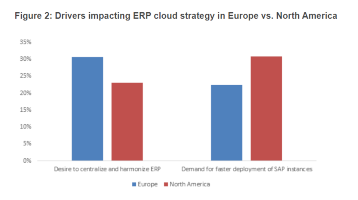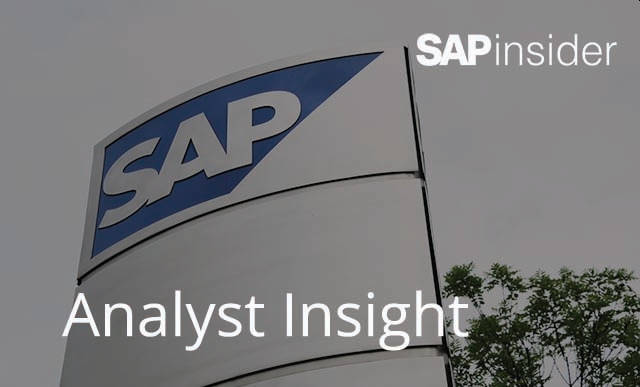Randstad Looks to the Cloud to Improve Employee Experiences
The More Engaged Employees Are, The Better It Is for Maximizing Business Success in the Low-Margin, Competitive Human Resources Services Market
Meet the Experts
By Alex Soto, Editor, SAPinsider
Remote work is here to stay. According to a National Bureau of Economic Research report, an estimated 20 percent of the U.S. labor force will continue to be remote after the pandemic.
Explore related questions
Randstad, a global human resources services leader sitting at the forefront of remote workforce trends, understands that an organization ill-equipped to increase employee productivity and engagement risks falling behind.
Earlier this year, to maintain its competitive edge and maximize its employees’ success in the new world of remote work, Randstad created a state-of-the-art self-service environment that improves employee experiences, while increasing employee productivity, lowering turnover, and reducing the cost of services.
According to Detlef Richter, Manager IT Back Office Applications at Randstad Deutschland, speed and agility in back-office processes are essential for creating modern employee experiences, which according to SAPinsider’s State of Human Experience in the Workplace Benchmark Report, is taking on a new level of strategic and business urgency thanks to the shift to remote work.
Employee experience can be defined as the value workers place on their employment. For example, work-life balance and job security are ranked almost as high as compensation for adult-age workers, according to Randstad’s Employer Brand Research 2021 report.
Richter is in Germany, helping to lead Randstad’s effort to modernize its IT back-office processes, which rely heavily on a combination of SAP technology and Google Workspace applications. Back-office activities include order taking, invoicing and cash collection, employee lifecycle and payroll, finance and the supporting processes, purchasing goods, and taking care of tax and accounting processes.
Randstad uses SAP ERP on-premise with managed services from NTT DATA Business Solutions (formerly known as Intelligence) for its back-office processes. The company is looking to modernize its SAP landscape and move its on-premise back-office processes to the cloud.
“I think moving to the cloud means more standardization because you can limit the configuration to main customization, so you have to stick to the standard,” Richter says. He sees this as a positive. “This is also a good thing because you don’t pile up so much technical depth.”
Recognizing The Treasure Within
When Richter started the project, the perception among Randstad’s executives was that the company’s database was too slow. But Richter explained to them that using SAP technology in the right way and modernizing where appropriate was more effective than purchasing new technology in many cases.
By elevating the strategic role of the back-office for the business and getting executives to see the value of SAP technology, including its reliability, auditability, usability, speed to data, and decision-making functions, Richter helped make the business case for the digital transformation effort.
When the executives recognized the treasure from within, they decided to invest in the modernization effort.
An initial requirement was to put more memory into the current system to improve its speed immediately. The memory update provided more time to develop solutions to further enhance the system, which eventually led to an investigation of SAP HANA and cloud opportunities.
Then, it was determined that the tools required to connect its office universe of tools and its on-premise SAP systems were prone to errors and too complex for users, which included job seekers, temporary, permanent, and remote workers, and the company’s employees responsible for back-office activities such as employee onboarding, running payroll, and customer account management.
“There are so many different processes for staff, customers, and talent, which creates complexity,” Richter says. “You need a lot of people and time to do all the professional services that the company delivers.”
To bridge the gap between SAP’s and Google’s universes, Richter understood that creating less friction between the two worlds was essential.
He explains that the organization’s mobile universe encompasses digital mobility, everywhere access, modern workflows, and 100% cloud-based tools. On the other end, there is on-premise world-encompassing systems such as SAP ERP and SAP BW. He notes that the characteristics of these on-premise tools include security, high availability, a high grade of automation, error-free payrolling and invoicing, safety, and scalability.
To remove friction, the team built a highly flexible, scalable IT infrastructure for back-office operations using on-premise SAP technologies and integrating it completely and seamlessly with the Google applications used daily.
He explains that whether a user is pulling data from Google Analytics or SAP Analytics, the aim of the integration was to make it so seamless, that it becomes invisible to the user.
“Users do not have to think too much about the interdependencies between different data,” he says. “What we did was make the complex things as simple as possible.”
He explains that the benefits of this digital integration include improved workflows, highly optimized processes, lower costs, and an enhanced user experience.
Digital tools and integration are necessary to balance the fast pace of change in an industry with typically low margins and heavy competition, he concludes.
Simplifying Complex Processes In A Human-Centered Business
Another aspect of the company’s business is its small to medium-sized enterprise (SME) customers, encompassing employers across various industries. He explains that SMEs typically lack the resources to invest in technology innovation.
“Their processes are largely driven by paperwork and include many person-to-person interactions,” he says. “Our aim is to eliminate paperwork wherever possible – this is what drives us and what drives the industry.”
Back-office processes need to be as digital as possible because it offers convenience to everyone involved in the employment process – from the company’s employees helping connect talent with businesses to job-seekers who sign their employment contracts and submit timesheets.
He emphasizes that as back-office processes are digitized, with SAP technology at the core, it’s important to remember that professional human services are a human business.
The human element is central to the company’s approach to digital transformation.
“We want to make sure the business maintains a human touch,” he says.
One way to achieve this aim is to make job-related activities faster and more straightforward.
“If you are an employee, you don’t want to go into the back office or to the head office to sign the paperwork,” he says. “You want to do it all from home, or from anywhere, without ever having to visit the office.”
The ease and convenience of digital tools help to improve user experiences, which is core to attracting and maintaining a top-shelf talent network.
“Every person is different, and every human has a different story or perspective. You have to take care of the customer, and as much as possible, individualize and enhance the experience for everybody,” he says.
Convincing Internal Users to Adopt
Creating an entirely digitized end-to-end solution that automates, streamlines, and simplifies the user experience meant that the system needed to seamlessly deliver services across desktop and smartphone platforms.
But like the organization’s executives, internal users were also not so receptive to the idea of change, at first. Richter and his team developed tools with user-friendly screens to simplify their work and eliminate back-office process complexities.
To help overcome this barrier to adoption, he introduced the tools piece-by-piece without switching off the old functionality.
“We always gave users the choice to use new or old functionality, when possible,” he says. He explains that once users saw the differences in functionality, it became an easy decision. Users were convinced of the benefits and adopted the new system.
“The key is to listen to people, talk to the people, listen to their complaints, and bring them together to try to drive it forward,” he says.
Paving the Way to SAP in the Cloud
Randstad is investigating the move to SAP S/4HANA Cloud because of three key benefits: greater flexibility to expand, moving away from heavy customization, and improved speed and data security.
The organization’s SAP Cloud pilot projects have already proven to be productive. For example, as part of one pilot project, the team developed an app for workplace safety inspections.
“We built an app on the SAP HANA Cloud where we do safety investigations of the workplace,” Richter says, explaining that onsite workplace visits in Germany are required. The app has a structured form that connects with SAP ERP, and the users can go through it directly from their smartphones, right onsite.
Today, Randstad is embarking on a new journey by undergoing a RISE with SAP project. SAPinsider will share insights from this project in a forthcoming article.
Richter has come a long way since he had to convince the organization’s executives and users of the benefits of modernized SAP technology. Back-office process automation is now helping to support the organization’s strategic business growth goals without adding headcount.
“More can get done with the same amount of people so that the company can grow without having to increase support staff,” he says.
What Does This Mean For SAPinsiders?
Engage executives in the innovation process. Communicate in practical terms the business case for digital transformation using SAP systems. Highlight how key updates can help improve the performance of current processes to help executives see the value of modernization.
Create quick wins to overcome barriers to adoption. Introduce new functionalities piece-by-piece without switching off old functionality to help users experience for themselves the benefits of a modernized system.
Recognize the value of moving SAP systems to the cloud. With SAP Cloud as a technical foundation for transformation, organizations can reap rewards such as greater elasticity to expand, greater standardization to move away from heavy customization, and improved speed and data security.
Company Snapshot: Randstad
- Company details: A leading provider of professional services in the HR services industry.
- Headquartered: Amsterdam, Netherlands
- Employees: 34,680 (average) corporate employees operating in seventy-five countries around the world
- Annual revenue: €20.7 billion
- SAP Solutions: SAP ERP, SAP S/4HANA, SAP BW/4HANA, SAP HANA, SAP Process Integration
- Industry: Information technology, engineering, finance and accounting, healthcare, human resources, legal, life sciences, manufacturing, logistics, and office and administration









